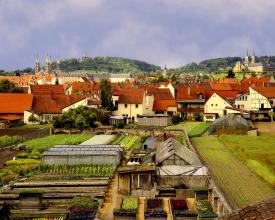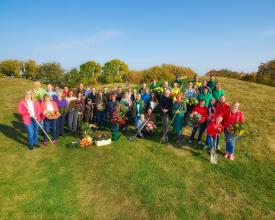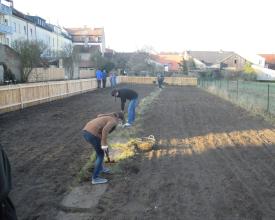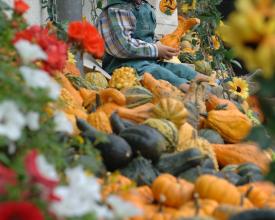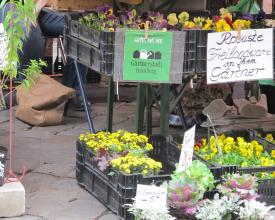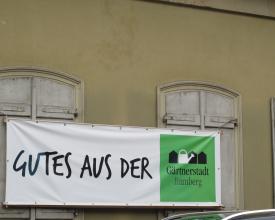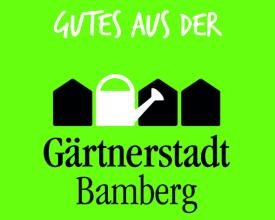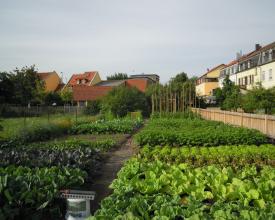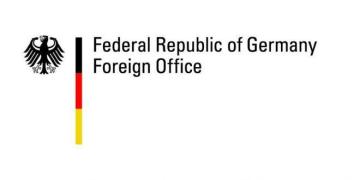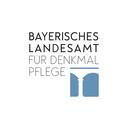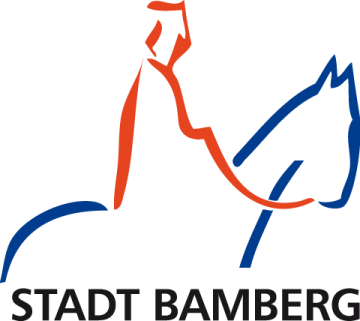
Revitalización de la jardinería urbana con raíces históricas en la ciudad Patrimonio de la Humanidad de Bamberg (Alemania)
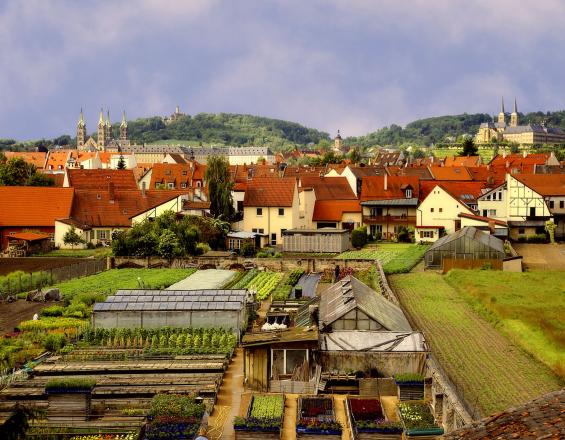
La ciudad de Bamberg fue inscrita en la Lista del Patrimonio Mundial en 1993 con arreglo a los criterios (ii) y (iv) debido a la conservación de su trazado medieval y sus edificios históricos. La ciudad ilustra el vínculo entre la agricultura (huertas y viñedos) y el centro de distribución urbana. El barrio de los hortelanos forma parte integrante del sitio. Sin embargo, las huertas urbanas históricas se han ido fragmentando progresivamente debido al reparto entre los herederos. Las familias que aún cultivan sus huertos con fines comerciales tienen dificultades. En 2012 se celebró en Bamberg la Exposición Estatal de Jardinería de Baviera(Landesgartenschau), que llamó la atención sobre el Distrito de los Jardineros del Mercado. En este contexto se ha revitalizado la jardinería urbana tradicional. Este esfuerzo contó con el apoyo de unos 1,3 millones de euros del Programa Nacional de Inversiones para el Patrimonio Mundial destinados a actividades de sensibilización, una campaña de marketing y la aplicación de un enfoque de uso sostenible del suelo. Se está elaborando un programa de seguimiento.
Contexto
Défis à relever
Factores sociales y económicos dificultan la conservación de los jardines urbanos históricos de Bamberg. Dado que el reconocimiento de Bamberg como Patrimonio Mundial se centró sobre todo en sus valores arquitectónicos, a menudo se pasaron por alto los huertos urbanos que se ocultan tras las casas particulares. El barrio de los hortelanos no es un destino que se explique por sí mismo. La heterogénea estructura de propiedad de la zona limita la influencia del municipio en su desarrollo. Las actividades comerciales de jardinería se enfrentan a restricciones espaciales que impiden el empleo de maquinaria. Los elevados costes de recursos esenciales como el agua suponen otro obstáculo. Al mismo tiempo, la creciente presión urbanística tentó en el pasado a varias actividades de construcción, provocando la pérdida de biodiversidad y conocimientos locales tradicionales.
Ubicación
Procesar
Resumen del proceso
Los componentes básicos forman parte de una estrategia global para revitalizar la jardinería urbana con raíces históricas dentro de la ciudad de Bamberg, declarada Patrimonio de la Humanidad. En su conjunto, los componentes básicos pueden desplegar mejor su impacto potenciándose mutuamente. El establecimiento de asociaciones a varios niveles (BB1) entre el municipio, las asociaciones de jardineros, las instituciones educativas y los ciudadanos locales facilita la concienciación (BB2) entre las diversas partes interesadas, logrando una comprensión común del valor de la jardinería urbana histórica y de las prácticas tradicionales implicadas. Un factor de éxito es la diversidad de actores, con los jardineros como portadores de conocimientos desempeñando un papel clave. Para conseguir un efecto a largo plazo, también se implica a las escuelas siguiendo un enfoque intergeneracional. Por último, los medios de comunicación actúan como multiplicadores de las diferentes medidas y ayudan poco a poco a aumentar la apertura de la gente hacia la percepción de la tradición jardinera de Bamberg como un patrimonio común que debe transmitirse a las generaciones futuras. Estos pasos permiten el desarrollo de una marca local (BB3) que posibilita la sostenibilidad de la iniciativa con el compromiso de los jardineros, así como el compromiso de la población local para volver a cultivar los campos urbanos (BB4).
Bloques de construcción
Asociación a varios niveles (municipio, propietarios, asociaciones, grupos de ciudadanos)
Dada la heterogénea estructura de propiedad del distrito de los hortelanos, el establecimiento de asociaciones requirió mucho tiempo. Hubo que sentar a la mesa a representantes del Ayuntamiento y sus filiales (por ejemplo, Obras Municipales para el suministro de agua) junto con jardineros, propietarios de terrenos, asociaciones (como el Jardín del Patrimonio o la Sociedad del Regaliz) y amantes de la jardinería. El ayuntamiento se puso en contacto con las partes interesadas por escrito, por teléfono y organizó varias reuniones. Hubo que tener muy en cuenta la privacidad de los residentes y encontrar usos adecuados para los terrenos baldíos. En un caso, el fomento de la confianza se tradujo recientemente incluso en la conversión de un vivero abandonado en un centro comunitario, donde se celebran actos culturales, clases de cocina y exposiciones.
Factores facilitadores
- Exposición estatal de jardinería de Baviera celebrada en Bamberg en 2012, que ha llamado la atención del público sobre la tradición jardinera de Bamberg.
- Amplio interés por la producción local de alimentos
- Financiación gubernamental con el Programa Nacional de Inversiones para el Patrimonio Mundial (2009-2013)
Lección aprendida
- La participación temprana de las partes interesadas es crucial: El proceso participativo debe comenzar con la elaboración de medidas, no sólo a la hora de repartir tareas.
- Los cambios llevan tiempo: Las personas se resisten por naturaleza al cambio. El ser humano prefiere la comodidad de lo conocido a la ansiedad que produce lo desconocido. Por lo tanto, hay que prever tiempo suficiente para implicar a las partes interesadas y conseguir que se mentalicen con el proyecto. No se trata de eliminar la resistencia. Eso no es posible. En su lugar, hay que permitir que la gente exprese sus problemas: a veces la gente sólo necesita ser escuchada.
- La comunicación es clave: Asegúrese de facilitar a tiempo a todos los interesados la información pertinente sobre el proyecto. Depender de rumores destruye la base de la confianza.
Enfoque intergeneracional para concienciar sobre el valor de los huertos urbanos históricos
Mientras que la jardinería urbana está de moda en todo el mundo, el barrio de los hortelanos de Bamberg aún se remonta a la Edad Media y no ha sido abandonado para construir viviendas como en Bath (Reino Unido) o Estambul (Turquía). Esta singularidad atrae por igual a investigadores y turistas internacionales. La población local, por su parte, da por sentado este hecho. La Oficina del Patrimonio Mundial comunica intensamente el interés nacional e internacional por la singularidad de Bamberg para concienciar sobre la protección de la tradición jardinera local. Varios documentales sobre el barrio de los hortelanos de Bamberg producidos por la televisión estatal bávara han reforzado la identidad local y el orgullo de la gente por la tradición jardinera. Las delegaciones internacionales que visitan periódicamente Bamberg para conocer el singular distrito de los hortelanos también contribuyen a la concienciación sobre el valor de este patrimonio.
En varias familias, la siguiente generación se ha hecho cargo del negocio de la jardinería. Algunos de esos jóvenes tienen incluso un escaño en el Ayuntamiento para garantizar que los intereses de los hortelanos se escuchen en el ámbito político.
En Bamberg, todos los escolares visitan ahora el barrio de los hortelanos al menos una vez para conocer in situ la producción de alimentos.
Factores facilitadores
- Huertas existentes que siguen tradiciones históricas
- Interés nacional e internacional por la horticultura urbana
- Cobertura mediática de la horticultura urbana
- Profesores interesados y niños entusiastas en las escuelas locales
Lección aprendida
- Asegúrese de no utilizar a los jardineros locales para aparecer en los medios de comunicación, sino dar crédito a sus conocimientos y habilidades
- Colabore en la producción de las películas para no hacer perder el tiempo a los jardineros.
- Acérquese a los profesores de forma proactiva
Desarrollo de una marca para los productos locales
La Oficina del Patrimonio Mundial puso en marcha un grupo de interés formado por 19 hortelanos. Organiza actividades conjuntas como el "Día de las Huertas Abiertas" anual y publica guías del comprador de productos locales. Este consorcio de hortelanos está coordinado por un conserje financiado por el Programa Nacional de Inversiones para el Patrimonio Mundial (2009-2013) y los hortelanos, respectivamente. El consorcio tiene su propio logotipo, encargado hace varios años y que reza "Gutes aus der Gärtnerstadt" (Buenos productos del distrito de los hortelanos).
Factores facilitadores
- Colaboración entre jardineros para intercambiar conocimientos sobre el mercado.
- Financiación para el desarrollo de la marca(Programa Nacional de Inversiones para el Patrimonio Mundial).
- Coordinación: A través de una plataforma conjunta (https://www.gaertnerstadt-bamberg.de/), los hortelanos presentan su gama de productos y servicios; las reuniones periódicas sirven para preparar la Jornada Anual de Puertas Abiertas de las Huertas e iniciar otros proyectos.
- Los productos hortícolas (verduras, arbustos, hierbas, flores) varían de un hortelano a otro. Esto reduce la competencia entre ellos.
Lección aprendida
- Explicar el valor añadido de una acción concertada/una marca conjunta.
- Un experto en marketing ha estudiado los puntos fuertes y débiles del barrio de los hortelanos como lugar de compras y ha elaborado un concepto de comunicación que se ha aplicado a partir de ahí. Se basa en la tradición de las familias de hortelanos y en las variedades únicas de productos frescos y nutritivos. El orgullo local y la conciencia ecológica de los consumidores de reducir su "huella alimentaria" comprando alimentos cultivados en su comunidad también funcionan como argumento de venta.
Recultivar los campos urbanos con cultivos tradicionales
Las tierras no cultivadas se utilizaron para establecer un Jardín Patrimonial con plantas endémicas y para volver a cultivar regaliz. El comercio europeo de semillas y raíz de regaliz constituyó en su día una parte importante de la economía local. La planta se utilizaba con fines medicinales y como edulcorante. Sin embargo, la raíz de regaliz de Bamberg perdió su competitividad en la década de 1960. En consecuencia, los conocimientos sobre el cultivo, la cosecha y el procesamiento del regaliz han disminuido. La Sociedad del Regaliz está comprometida con el recultivo de la planta e intenta reconstruir los métodos de recolección y procesamiento. Hoy en día, la competitividad internacional ya no desempeña ningún papel. La raíz de regaliz es ahora un producto para turistas.
Factores facilitadores
- Personas comprometidas: una de ellas posee un terreno; otras están interesadas en la jardinería, pero no tienen un jardín para ellas solas.
- Terreno disponible.
Lección aprendida
El compromiso debe mantenerse más allá del periodo de financiación inicial: las reacciones positivas de los medios de comunicación, así como la experiencia de la comunidad de personas con ideas afines, inspiraron un compromiso continuado.
Impactos
(1) Se adoptó un plan de uso del suelo jurídicamente vinculante para proteger los campos de jardinería urbana de la urbanización.
(2) Se crearon nuevos espacios semipúblicos, como el Jardín del Patrimonio, con plantas endémicas, y los campos de regaliz.
(3) Se han puesto en marcha iniciativas educativas con escolares.
(4) La gran cobertura mediática local, nacional e internacional atrajo a los jóvenes y dio lugar a proyectos agrícolas solidarios y a un mayor interés turístico por el distrito.
(5) Se documentaron y se hicieron accesibles los conocimientos locales de jardinería.
(6) Junto con la mayor visibilidad del distrito de los hortelanos y la tradición hortícola de Bamberg, en 2014, la tradición hortícola de Bamberg se inscribió en el Inventario Bávaro del Patrimonio Cultural Inmaterial. En 2016, se incluyó en el Inventario Nacional del Patrimonio Cultural Inmaterial.
Beneficiarios
Comunidad local de Bamberg, jardineros, asociaciones de jardineros: Oberer Gärtnerverein, Unterer Gärtnerverein, Verein Gärtner- und Häckermuseum, Sortengarten e.V., Süßholzgesellschaft, instituciones educativas, investigadores, turistas
Objetivos de Desarrollo Sostenible
Historia
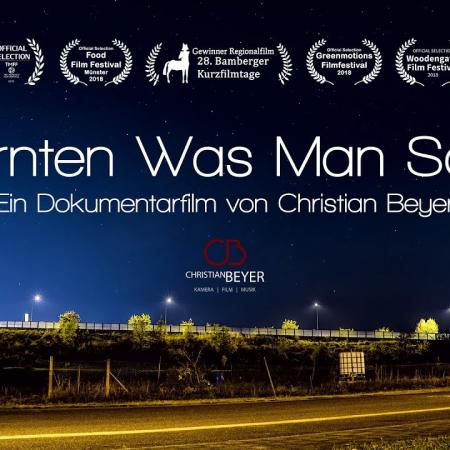
En Bamberg se practica la jardinería urbana desde la Edad Media. El barrio de los hortelanos forma parte, junto con la ciudad de las colinas y el barrio de las islas, del Patrimonio de la Humanidad "Ciudad de Bamberg". En 2009 se llevó a cabo una encuesta para averiguar si los propietarios de los campos de cultivo estaban abiertos a nuevas formas de jardinería compatibles con las limitaciones del distrito de los hortelanos. Los resultados fueron aleccionadores.
Siete años después de la encuesta, los hortelanos de toda la vida empezaron a colaborar con familias jóvenes: En 2016 -cuando la tradición hortelana de Bamberg se incluyó en el Inventario Nacional del Patrimonio Cultural Inmaterial-, el grupo local de transición puso en marcha su primer huerto de cosecha propia en las afueras de Bamberg. El cineasta Christian Beyer acompañó esta iniciativa y captó el desarrollo de este huerto comunitario. Captó cómo cultivaban sus propias verduras con calidad ecológica y cómo esto cambió su percepción de la producción de alimentos.
La película "Reaping What You Sow" (https://www.youtube.com/watch?v=2PJ6BmU1-Tk) fue galardonada en el Festival de Cortometrajes de Bamberg en 2018 en la categoría "Made in Upper Franconia". Actualmente, el grupo de transición local crea otro huerto pick-your-own dentro del histórico distrito de los hortelanos. (Patricia Alberth, responsable de la Oficina del Patrimonio Mundial de Bamberg)

